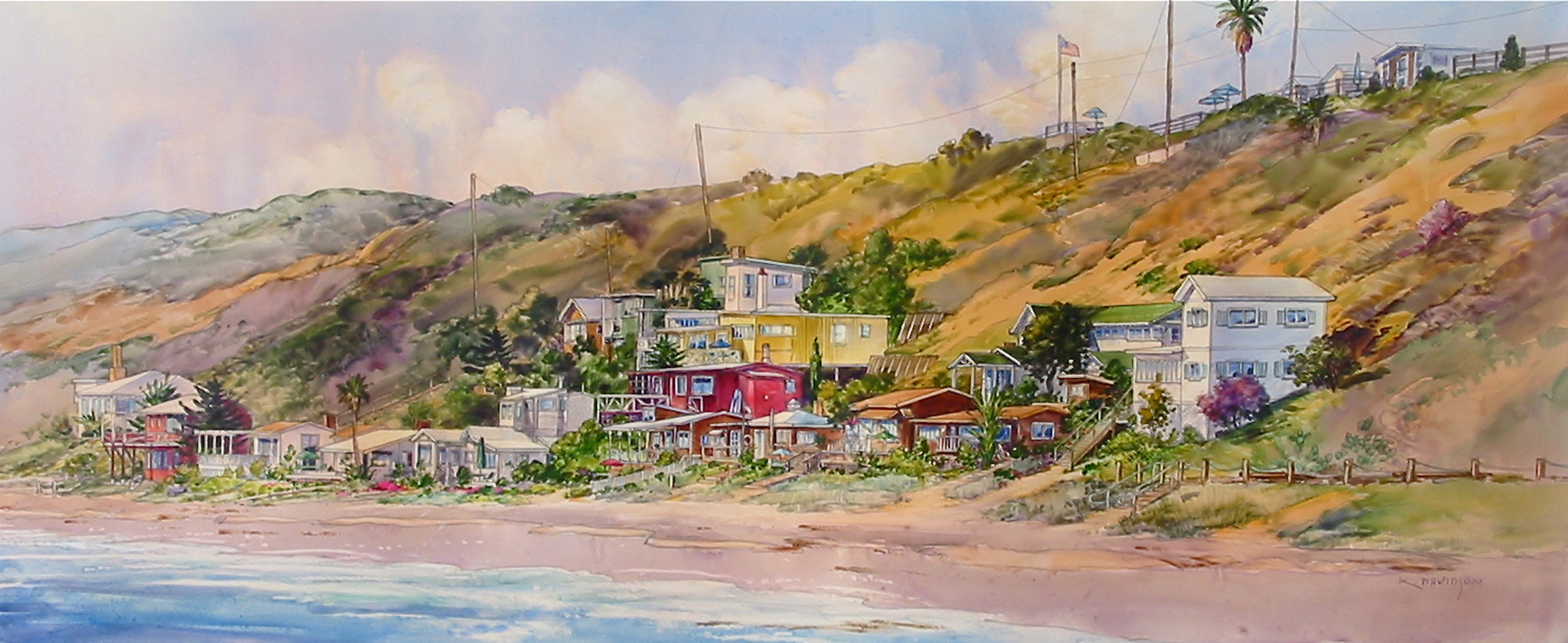One on One With Craig De Pfyffer
By Gina Dostler
 While Earth Day events turn up the volume on environmental concerns once a year, there are conscientious steps we can take daily where we live and work to preserve the planet’s resources. Craig de Pfyffer, Laguna Beach resident and landscape architect, says we can start to set things straight right here in our own homes, starting with our yards. He gives some valuable insight that takes nominal time and money that will help bring our planet back to balance.
While Earth Day events turn up the volume on environmental concerns once a year, there are conscientious steps we can take daily where we live and work to preserve the planet’s resources. Craig de Pfyffer, Laguna Beach resident and landscape architect, says we can start to set things straight right here in our own homes, starting with our yards. He gives some valuable insight that takes nominal time and money that will help bring our planet back to balance.
Q: What’s the first measure a homeowner can do to help?
A: First, let me explain that we live in a Mediterranean climate here in coastal California where if we didn’t pump in water, it would be a desert. And in a desert, water is precious. Homeowners must remind themselves to beware of water usage. To keep pumping water away from far off rivers to supplement our own water basin, though leaving our area fresh and alive, leaves the natural areas the rivers had flowed, barren and dry. Using reclaimed water helps. But we can better that with installing smart controllers into our watering systems at home to save water. Most homeowners give their landscape more water than it requires due to season and climate changes.
Q: What is a smart controller and how does it differ from a regular sprinkler timer?
A: The regular timer is simply programmed manually for start times, water duration and days of the week, no matter if it has rained. The smart controller goes further and actually tracks weather patterns. So you can program in your summer watering schedule but the smart controller can reduce or increase the water usage based on real time weather changes. And with rain sensors built in, it can shut off the irrigation when it does rain. By watering your plants with only as much as they need, you can save as much as 1,000 gallons of water a month. Imagine if everyone did that….
Q: Next step to help our environment?
A: It’s so simple and easy and only requires a little extra time and effort. Reducing the amount of fertilizers and pesticides we use everyday. The big picture here is we really don’t need to have our yards without a blade of grass out of place or super lush without a single bug bite in a leaf. Remember everything washes back into rivers and oceans, and that includes pesticides and fertilizers. Fertilizers washed into the ocean causes algae and other life to grow dramatically out of balance, eventually stripping oxygen out of the water which fish and aquatic life need to survive. They’re called dead zones where aquatic life is dying and they are popping up all over the world’s lakes and oceans.
 Q: But aren’t fertilizers necessary for a healthy landscape?
Q: But aren’t fertilizers necessary for a healthy landscape?
A: Using organic over chemical or inorganic fertilizers keeps the soil in better balance since organic, with its many plant nutrients, is in low concentration due to its natural slow process of microbes and fungi breaking down the insoluble nutrient parts into small enough particles the plant roots can absorb. Chemical or inorganic fertilizers are more concentrated, very soluble, and easily over used. Plus the high concentration of soluble nutrients easily dumps into the ocean via our drainage system and pollutes the oceans with high amounts of nitrogen causing explosions of too much algae.
Q: Any alternatives for the use of pesticides?
A: Beneficial bugs are great and sometimes garner unnecessary use of pesticides. Many of these bugs are mistaken for pests and killed. For instance the ladybug has four stages to its life cycle, eggs on the underside of leafs, black, long and spikey-looking larvae hatched from the eggs, larvae turned pupa which then grows into a ladybug. All but the adult stage are commonly mistaken as pests. Many caterpillars which eat some of the leaves off your tree grow into beautiful butterflies, nature’s graceful pollinator. Who doesn’t love these colorful apparitions floating around their garden? If the price of it is a few eaten leaves, then so be it. So get to know your good bugs from the bad ones and the pesticide you thought you had to spray can be put away. Another alternative is to spray plain ‘ol water underneath the leaves to dislodge the bugs that are eating the plants. Once off, most bugs have a hard time getting back on.
CONTACT INFORMATION
Craig de Pfyffer, ISA,
ASLA Associate
Environmental Designs
1278 Glenneyre Street #196
Laguna Beach, CA 92651
800-811-3010
www.environmentaldesignslandscape.com




